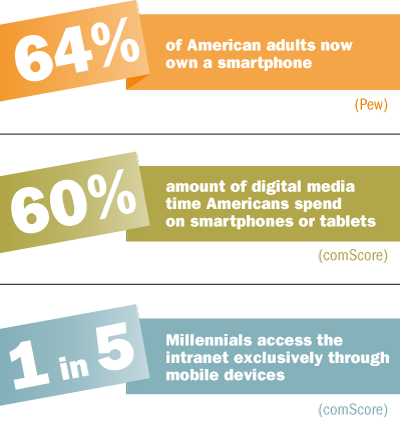
Not convinced that designing employee communication for mobile should be a priority? Consider these facts:

Even if you’re still figuring out the role of mobile, it’s time to start creating messages that are effective across multiple devices. Here’s one immediate reason: Many employees prefer to access email on their smartphones than their desktops.
Here are seven ways to write for mobile:
 |
Focus on what matters most. You don’t have space for multiple messages; choose the most important one. |
 |
Invest in the subject line and headline. |
 |
Chunk copy instead of building blocky text. |
 |
Make content self-contained. Smartphone users will scroll, but they don’t want to jump back and forth between email and an intranet site or separate document. So shape relevant content into compact screen-sized bundles. |
 |
Carefully choose key words. When looking for something online, mobile users are most likely to start with search. In every mobile format, select words that best resonate with employees. |
 |
Take out your scissors and cut, cut—then cut some more. As digital experts Nielsen Norman Group advise, “(Even) short is too long for mobile.” Make copy as brief as you possibly can. |
 |
Test communication on a variety of devices. The only way to get the true mobile experience is to see how your messages work on the smartphones employees use. By drafting and testing and then refining, you’ll develop the right formula for your mobile communication. |



